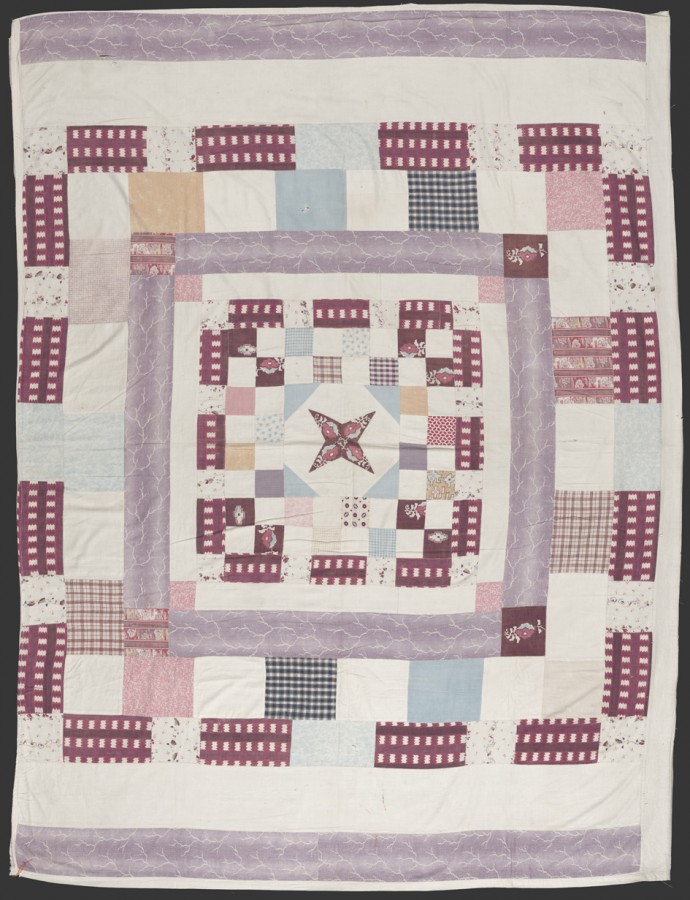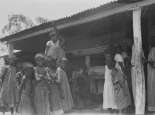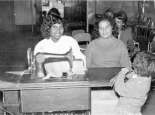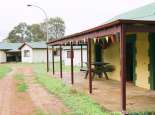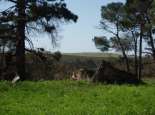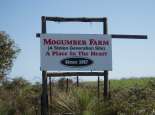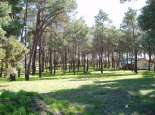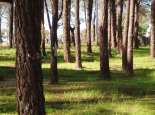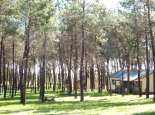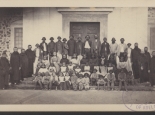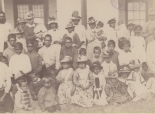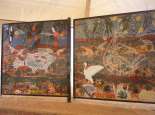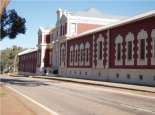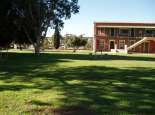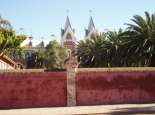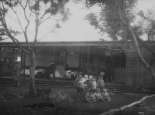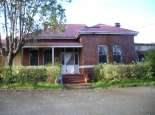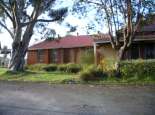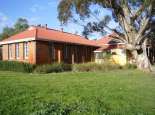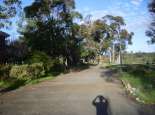Missions
Many Noongar and other Aboriginal children, for the past 150 years, have been taken away from their families and placed into missions and other institutions.
There were a number of church missions in Noongar country, for example Wandering Mission, Roelands Mission and New Norcia Mission. Children were also taken to government settlements such as Moore River Native Settlement and Carrolup Native Settlement.
Many children were taken from hospitals, schools, in the street or directly from their families. Often they never saw their parents and siblings again. Some of the kids from missions have been fortunate enough to find their families much later in life.
There are many stories told by Noongar people about their life and experiences in these missions and institutions. For example, Heather Vicenti’s experiences at Roelands Mission are told in Too Many Tears: an Autobiographical Account of Stolen Generations. Mary Terszak, in Orphaned by the Colour of my Skin: a Stolen Generation Story,talks about her time at Sister Kate’s.
Between 1995 and 1997 there was an inquiry which looked into the removal of Aboriginal children from their families. The Bringing Them Home Report handed their findings to the Federal Government on May 26, 1997, which led to Sorry Day, one year later. The report found that from 1910 to 1970, the number of Aboriginal and Torres Strait Islander children removed from their families was between one in three and one in ten children.
Anglican children’s missions, Perth
From the earliest years of the colony, there were several missions in Perth, Fremantle and the Upper Swan.
Dr Louis Giustiniani established a mission at Middle Swan in 1836. Following conflict with local settlers, he left the colony in 1837 but the mission continued.[i]
Reverend King opened a school in Fremantle in 1842, with fifteen children, mostly girls, attending. In 1851, concerns about the children being close to the new convict depot in Fremantle, led to the children being transferred to the Wesleyan mission school in Perth.[ii]
Anniesfield
Anglican mission in Albany which operated from 1852 to 1871.
In 1858 there were 13 girls and 5 boys, aged from 18 months to 16 years. They were cared for by Mrs Camfield, wife of the Government Resident in Albany.
The girls did the domestic work for the mission. The children were also taught reading, writing and arithmetic.
Some of the girls married men from the Albany area and others went to Victoria to marry men from the Ramahyuck Mission Station, including Bessie Flower.
In 1871 Bishop Hale closed the mission and transferred the children to Perth. [iii]
Badjaling Mission
Established by Miss Mary Belshaw and Miss May McRidge at Badjaling near Quairading in 1930. It operated until 1954. There was a school room, hospital ward and a church. Children lived with their families nearby.
Aunty Doolann Leisha Eatts talks about Noongar people camped at Badjaling Mission working together to protect children from being removed.
For more information see video: Badjaling Noongar Cultural Festival 2008
Carrolup
Carrolup was a government run settlement (for the stolen generations) near Katanning that operated from 1915 to 1922, and again from 1938. It 1952 it became Marribank Farm School run by the Baptist Church until 1970. [iv]
Between 1946 and 1951 children at Carrolup produced distinctive landscape paintings based on what they saw in the local bush. Through British philanthropist Florence Rutter, they were exhibited throughout Australia, New Zealand and England. A large collection of Carrolup art was sold to a United States collector at a European exhibition in 1951. More than sixty years later, in 2004, the collection was found at Colgate University in upstate New York. In 2013 it was gifted to Curtin University and will be displayed back in Katanning.[v]
There is more information about Carrolup art in Koorah Coolingah (Children Long Ago), a catalogue of Carrolup art produced by the Berndt Museum of Anthropology in 2006.
Moore River Native Settlement
Moore River Native Settlement was a government run settlement that operated from 1918 to 1951. In 1951 it became Mogumber Mission, run by the Methodist Church from 1951 until 1980. [vi]
Doris Garimara Pilkington’s 2002 book Follow the Rabbit-Proof Fence was based on her mother’s and aunt’s experiences being taken away to Moore River Native Settlement in 1931. They escaped and walked back to their home at Jigalong in the north-west of Western Australia, 2,400km away. The book was made into a film: Rabbit Proof Fence. There is more information in this study guide.
New Norcia
Established in 1846 by Benedictine monks, the mission closed in 1974.[vii] Initially Noongar families lived in cottages and worked on the property. St Mary’s Aboriginal boys’ mission was established in 1858 and St Joseph’s Aboriginal girls’ mission in 1861.[viii]
As Perth developed along the river, new settlers and Noongar people clashed for their own livelihood and access to land and water. One of the strategies was to remove the children and place them in missions with the idea that the parents would follow. A lot of Noongar people surrendered to New Norcia because of massacres down here. So therefore Noongar people saw the mission as a safe place. They could live anywhere on the farm because it all belonged to the church.[ix]
There were many deaths from measles at New Norcia in the 1860s. By 1875 there were 180 Aboriginal people at the mission, and in 1890 there were 122.[x]
After reductions in government subsidies for missions in the 1890s and Bishop Salvado’s death in 1900, Noongar families were encouraged to work for other farmers in the area rather than for the mission. Children lived at the mission and parents had restricted access to them. Sometimes children from other places were taken by the Welfare and placed in New Norcia.[xi]
By 1946, when the mission had been operating for 100 years, more than 700 boys had been through St Mary’s orphanage and school.[xii]
In the 1950s and 60s a combination of the welfare and Benedictine community rules made it difficult for parents to keep in contact with children in the mission.[xiii] They needed special permission to see their kids and that was only on a Sunday.[xiv]
Margaret Drayton was a New Norcia town and mission resident:
We had access to some education living at New Norcia mission. Although, this brought its own restrictions, as we were bound to live by the mission’s rules and religion and were not allowed to speak our language.
I have a strong connection to Yuedcountry, around New Norcia. I take my children there to remember where they came from.
Margaret Drayton, oral history, SWALSC, 2011
Martha Borinelli nee Taylor talks about how the government gathered Noongar people together at New Norcia and Moore River Native Settlement during WWII.
Roelands Mission
The Native Mission Farm, Roelands was established in 1941 as a non-denominational mission for children. It was set up by a group of Christians headed by Perth businessman Albany Bell, who also owned the land. The mission was located on the Collie River between Bunbury and Collie, and had a dairy, chooks, orchards and grazing. In total about 500 children spent time at Roelands before it closed in 1975.
Roelands is now managed by Woolkabunning Kiaka Inc., a group of former mission residents. The group runs educational and healing programmes on the site and some former residents live in the mission houses.
Roelands photos
Some Roelands stories:
Roelands Mission transforming the hurt into healing
Roelands Mission – Syd Jackson
Sister Kate’s
Sister Kate’s catered for fair-skinned (“quarter-caste”) children, who lived in cottages and went to the local school.
Initially called the Children’s Cottage Home, Sister Kate’s was established by the Anglican Sister Kate in Mosman Park in 1933, moving to Queens Park in 1934. Sister Kate died in 1946 and the Presbyterian Church took over management in 1956.
From 1987 an Aboriginal Consultative Committee gave advice to the organisation. In 1988 the Unitiing Church supported the formation of the Manguri Aboriginal Corporation, which took responsibility for the care and services on the site. In 2002 financial and management problems led to its closure.[xv]
In 2014, the land is managed by 2 Aboriginal groups with a third section held in trust by the Aboriginal Land Corporation for the development of a healing centre. The first group, Sister Kate’s Children 1934-1953 Aboriginal Corporation, has established accommodation for former residents of Sister Kate’s. The second group, Beananging Kwuurt Institute (beananging means “first light before the break of the day” and kwuurt means “spiritual heart”), offers support for Aboriginal women, men and their families, and is planning to offer a wide variety of training. [xvi]
Mary Terszak’s story about her time at Sister Kate’s can be found in this exhibition at the National Museum of Australia.
Swan Native and Half-Caste Home
Opened at Middle Swan in 1871 under the direction of the Church of England Orphanage Board.
The Mission was housed in a building now known as Cornwell House, part of the Swanleigh Anglican Hostel. In 2013 it was empty after extensive storm damage.[xvii]
Wandering Mission
Catholic mission in Wandering, ran from 1944 to 1976. Also known as Saint Frances Xavier Mission.[xviii]
[i] William McNair and Hilary Rumley, Pioneer Aboriginal Mission: the Work of the Wesleyan Missionary John Smithies in the Swan River Colony 1840-1855,pp.19-20
[ii] McNair and Rumley, Pioneer Aboriginal Mission,p.60
[iii] Anna Haebich, Broken Circles: Fragmenting Indigenous Families, 1800-2000, p.229
Lois Tilbrook, Nyungar Traditions: Glimpses of Aborigines of South-Western Australia, 1829-1914,Nedlands: UWA Press, 1983, p.44
‘Natives’ Institution King George’s Sound, Western Australia’, [about 1858], State Library of WA
[iv] Anna Haebich, Broken Circles: Fragmenting Indigenous Families, 1800-2000, pp.229-230, 519
[v] http://au.news.yahoo.com/thewest/a/-/breaking/17076778/noongar-art-coming-home/; http://www.berndt.uwa.edu.au/generic.lasso?token_value=koorah
[vi] Anna Haebich, Broken Circles: Fragmenting Indigenous Families, 1800-2000, pp.229-230
[vii] George Russo, Lord Abbot of the Wilderness: the Life and Times of Bishop Salvado,Melbourne: Polding Press, 1980, p.38-42;
Abbott Bernard Rooney, ‘Noongar, Windjar Kurl?: Cultural Awareness – A Challenge for the Nineties’, in David Hutchison (ed.) A Town Like No Other: the Living Tradition of New Norcia,p.89.
[viii] Neville Green and Lois Tilbrook, Aborigines of New Norcia 1845 – 1914,Nedlands: University of Western Australia Press, 1989, p.xxvii
[ix] Margaret Drayton, former New Norcia resident, conversation with Denise Cook, June 2014
[x] David Hutchison (ed.), A Town Like No Other: the Living Tradition of New Norcia, p.63
[xi] Margaret Drayton, former New Norcia resident, conversation with Denise Cook, June 2014
[xii] David Hutchison (ed.), A Town Like No Other: the Living Tradition of New Norcia, p.66
[xiii] David Hutchison (ed.), A Town Like No Other: the Living Tradition of New Norcia, p.49, 63
[xiv] Margaret Drayton, former New Norcia resident, conversation with Denise Cook, June 2014
[xv] Ashley McDonald, ‘Are we Family? And if so can I Still Sue You?’, Murdoch University Electronic Journal of Law,Vol. 7, No. 1, 2000 http://www.austlii.edu.au/au/journals/MurUEJL/2000/8.html ;
http://www.signposts.communitydevelopment.wa.gov.au/facilities/view.aspx?id=229
[xvi] Neville Campbell, Beananging Kwuurt Institute, conversation with Denise Cook, 30 June 2014
[xvii] Anna Haebich, For Their Own Good: Aborigines and Government in the Southwest of Western Australia, 1900-1940,p.8
Anna Haebich, Broken Circles: Fragmenting Indigenous Families, 1800-2000,p.229
[xviii] Anna Haebich, Broken Circles: Fragmenting Indigenous Families, 1800-2000, p.230
